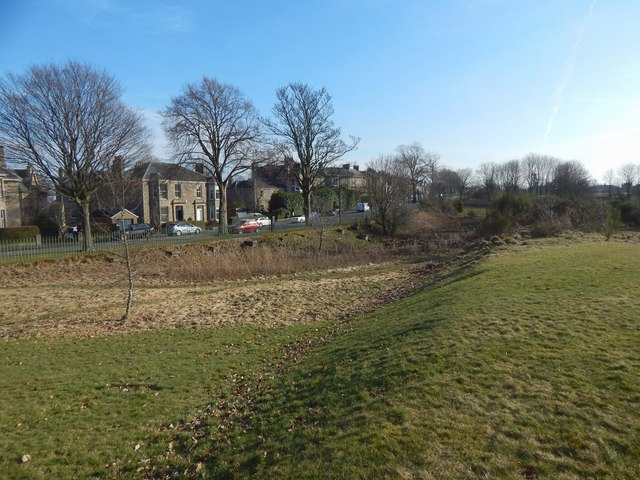King's Park: remains of the race track
Introduction
The photograph on this page of King's Park: remains of the race track by Lairich Rig as part of the Geograph project.
The Geograph project started in 2005 with the aim of publishing, organising and preserving representative images for every square kilometre of Great Britain, Ireland and the Isle of Man.
There are currently over 7.5m images from over 14,400 individuals and you can help contribute to the project by visiting https://www.geograph.org.uk

Image: © Lairich Rig Taken: 24 Feb 2018
The feature of interest here is the raised area on the right. Looking at online archaeological databases, I saw an entry for it as "Dam (period unassigned)". I was (wrongly, as it turns out) sceptical about that interpretation, but that did at least lead me to investigate, and so to learn that it had once been the course of a race track. For views along the former race track itself, see Image and Image For more on the dam itself, see the concluding paragraphs below. This raised area was part of an old race track, for horse racing, that used to run along the northern and eastern sides of the park, and through the centre of the park; for its still earlier course, see the concluding comments of this description. Although the creation of a golf course and other features in the park has made the race track less visible, much of its former route can still be traced easily enough on satellite imagery, and some parts, such as that shown here, are still very evident on the ground. For example, its western extremity was at Image, where a turning can be seen. The southeastern extremity was at Image, but that portion of the race track is much less visible. From there, it ran back through the centre of the park, passing through Image, to form a loop. The race track is shown on OS maps from the first edition (surveyed 1858—60) onwards, but it significantly pre-dates OS maps: for example, it is shown on an 1832 plan of Stirling prepared in connection with the Great Reform Act, and on an 1820 plan by John Wood. The area lies within the King's Park. The OS Name Books (c.1860) observe that the race track is a mile and a quarter in length, and that the part of King's Park that lies within the race track was then under tillage. Nimmo's 1777 History of Stirlingshire mentions King's Park, then enclosed by a wall, and former gardens within it: "within the gardens is a mound of earth, in the form of a table, called the Knot". This is Image; it is easy to forget that it was once part of King's Park, separated as it now is from the main body of the park by Dumbarton Road. The 1777 work does not mention the race track, which presumably did not then exist, but the two-volume 1880 revision of the same work does mention it, as well as the present-day road: "It is not yet a century since [the King's Park] was first traversed by a public road, the old Dumbarton road having hitherto gone by Cambusbarron." Part of the course of the old boundary wall around the park can still be discerned on satellite imagery, crossing fields: it leaves the Castle at Image and heads southwest to meet the main road at about Image; it continues SSW to Image, heads SSE for about 60 metres, and then turns to head ESE. - - • - - As mentioned at the start of this discussion, I was originally sceptical about this feature's having once been a dam. However, six months after writing the original version of this description, I happened to read the paper "Lidar and the Historic Land-use Assessment of the King's Park, Stirling", by Stephen Digney (Historic Environment Scotland, 2016). A download link for that paper can be found at https://www.stirling-lhs.org/blog/kings-park-stirling-new-understandings (at Stirling Local History). See pages 15—18, and the discussion of "the Park Loch". A solid case is made there, with support from LIDAR mapping and digital elevation data, that the raised linear feature shown in the present photograph was originally a dam (on which a part of the race track was later built). With regard to the now long gone Park Loch, the author of the paper notes that "a body of water this size and shape could only exist if the embankment is indeed a dam", and that the dam is "a major engineering work of the medieval period". See the paper itself for a detailed discussion; in addition, pages 12—13 discuss the race track, and reveal its earlier course.

